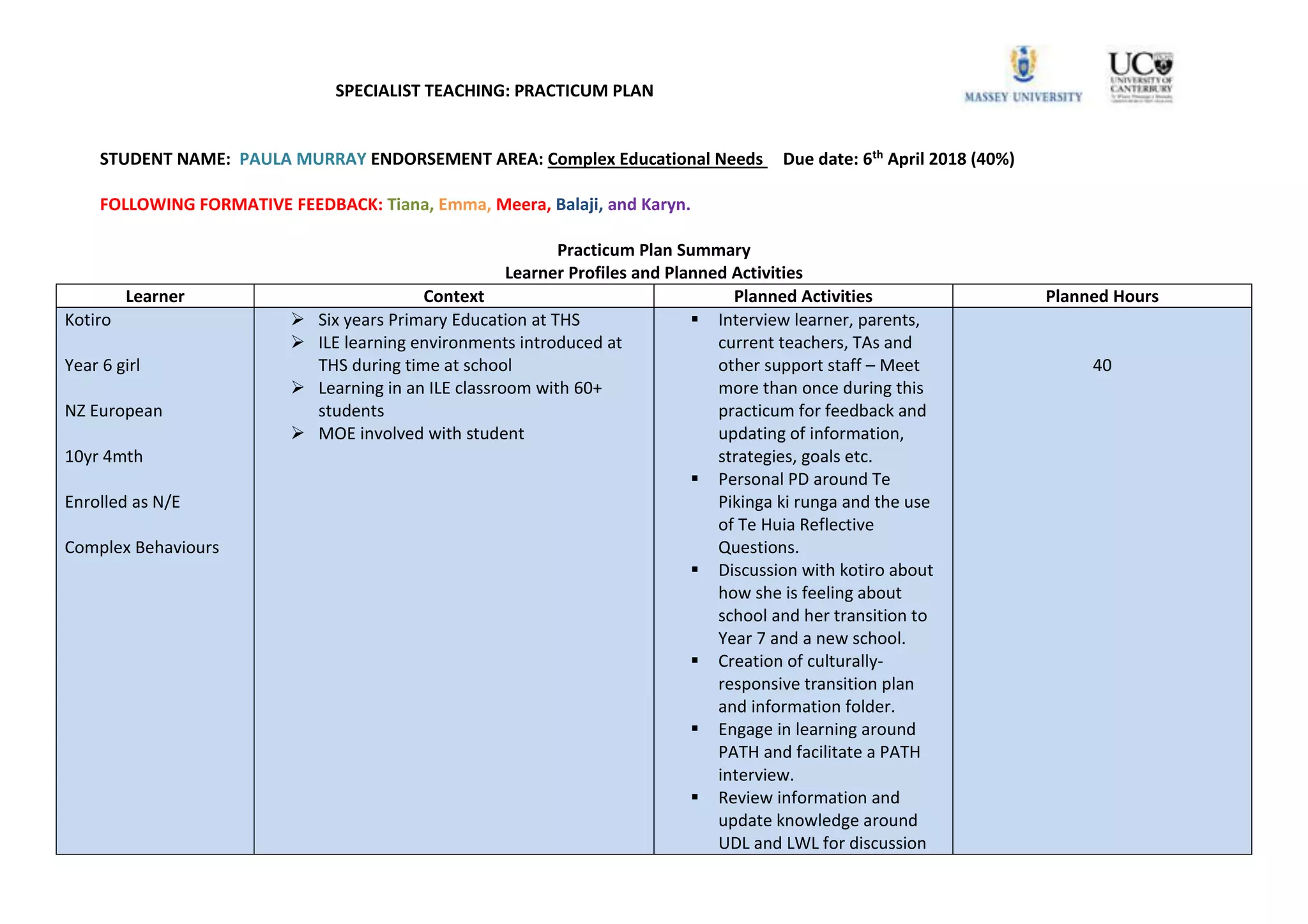This document outlines Paula Murray's practicum plan for a special teaching endorsement in complex educational needs. The plan details three case study students - Kotiro, Tama 1, and Tama 2 - and the planned activities Paula will undertake with each student. These activities include interviews, assessments, transition planning, and reviewing information on student rights and inclusive education. The plan also lists additional activities Paula will complete to support her professional competencies and standards in areas like Te Tiriti o Waitangi partnership, professional learning, relationships, and teaching. Planned hours and possible evidence are provided for each activity.






































